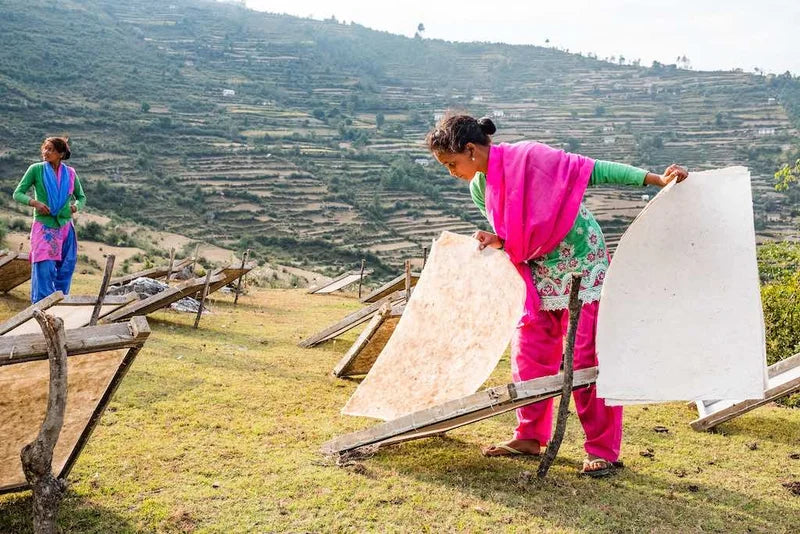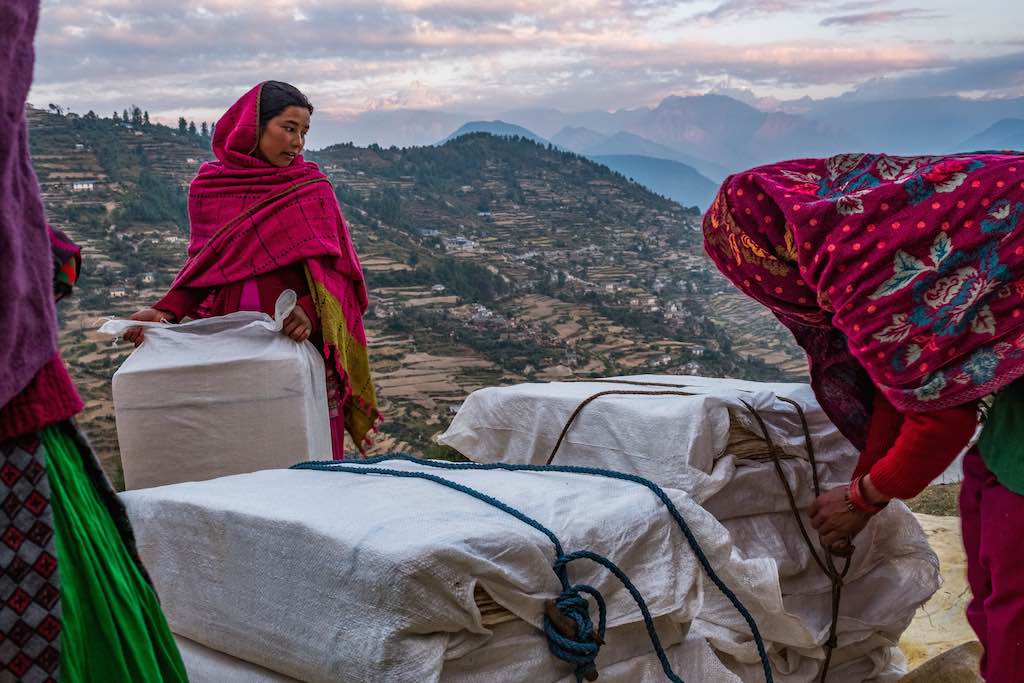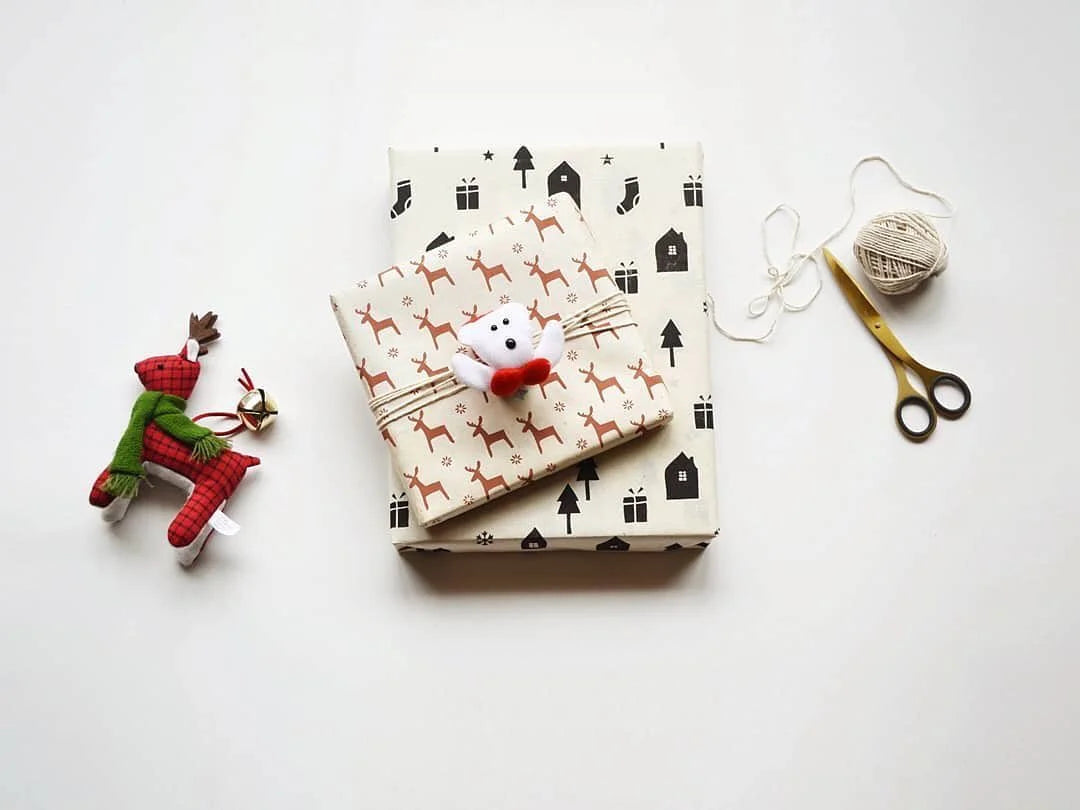
The uniqueness of our handmade papers
-
Historical Perspective
The paper that we use in all our products is Lokta Paper. This is traditional Nepalese artisan made paper handcrafted from the Daphne bush (Daphne papyracea) or Lokta which grows wild in the Himalayas. It is said the art of papermaking was learnt from Tibet and the commercial papermaking techniques have been around since the 12th century A.D!
Lokta paper was primarily used for writing sacred texts. Indeed, the oldest surviving lokta paper document is stored in Nepal’s National Archives in Kathmandu – a sacred Buddhist text called the Karanya Buha Sutra, which is estimated to be between 1,000 and 1,900 years old.
Lokta paper has a unique texture - soft yet strong and insect-resistant. -
Economic Perspective
Lokta grows wild in forested areas of 55 of the 75 districts of Nepal, throughout the entire east and in the western mountains and the Himalayan regions. And Lokta Paper is produced by cottage and small factories(units) in about 32 districts of Nepal.
According to Nepal Ministry of Commerce (MoC), the livelihood of an estimated 55,000 families depends on Lokta collection and approximately 80% of the entrepreneurs and workforce in this sector are women.
Marginal farmers and cottage and small industries in the high hills and mountains, depend on Lokta paper making for their livelihood as they have limited scope for other economic activity.
According to the Forest Survey and Research Office of Nepal, every year 110,481 tons of Lokta is available on 2.91 million hectares of land and about 1,000 tons is collected annually, which produces 330 tons of paper.
Process of making Lokta Paper
A very brief info on how lokta paper is harvested and produced.

The Harvest
Branches of plants are cut above 20 cm to 25 cm from the ground. The bark of harvested stems is peeled out using a sharp knife, then fully dried and stored. Because the plant is not rooted out, the plant regenerates completely over the next few years and is ready for use again in around 6 years, making it a sustainable produce.

The Paper Pulp
Stripped bark is chopped into smaller pieces and allowed to soak in bath for a few hours. Once it’s soggy, the plant is boiled for about 8hours to soften the fibres, then washed in cold water. Once cooled, it is pulped using manual beater into a smooth paste.

The Mesh
About a cupful of this pulp is then poured onto wooden mesh frames and smeared evenly. Any natural flower petals or seeds are then added on to it (to create designs like our Natural pressed cornflower design - restocking soon!) at this stage. The frames are then left out to drain the water and dried in the sun.
The Paper
The artists are able to create paper of varying thickness ranging from 6gsm (our LOKTAA Tissues - available exclusively to businesses on wholesale) to 80gsm (our LOKTAA gift wraps) or 100gsm. Once dried, they are removed from the frames - ready to be converted into beautiful handcrafted bags, twine & gift wrapping papers.




LOKTAA
LOKTAA as a brand, is a modern take on this traditional Nepalese paper. We pride ourselves in providing unique designs & quality products to the wider international market. We are based in Sydney, Australia and work with a bunch of some super-skilled paper-makers & craftsmen in Nepal that transform these handmade paper into our wonderful our unique stationery range!
